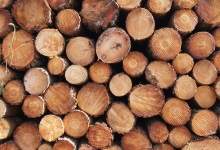

Stockholm’s oldest power plant is moving with the times. By 2030, if not before, it will be rid of the dirty coal that has fuelled it since 1903. Instead, it will burn biomass such as wood chips and timber scraps, helping Sweden in its quest to be fossil-fuel free by 2040.

Discover B2B Marketing That Performs
Combine business intelligence and editorial excellence to reach engaged professionals across 36 leading media platforms.
The Swedes are not alone in looking to biomass to secure a fossil-free future. In China, the world’s largest user of coal, biomass is set to play a major part in generating 15% of its energy from non-fossil fuel sources by 2020. And in the US, where President Obama has been accused of waging a ‘war on coal’, a memo from Janet G. McCabe, acting assistant administrator of the office of air and radiation, pledged "to continue advancing our understanding of the role biomass can play in reducing overall greenhouse gas emissions".
While its power to press against fossil fuels is undeniable, doubts over its carbon cutting credentials is growing. The questions all stem from the overly simplistic premise that the carbon it emits when burnt is earned by its growth, rendering it neutral.
Not as green as it appears
While its carbon capturing qualities excite interest among the scientific and environmental communities for further exploration, current policy and practice does not deliver. "Burning biomass instead of fossil fuels does not reduce the carbon emitted by power plants," wrote a group of 78 leading environmental scientists in response to the McCabe memo.
The basis for the letter, which counts the founder of The Center for Health and the Global Environment at Harvard Medical School and a senior fellow of the United Nations Foundation among its signatories, is that once factors such as where the biomass comes from, what type of power station it is burnt in, and what it has displaced are taken into account, it is actually known to lead to an increase in emissions.

US Tariffs are shifting - will you react or anticipate?
Don’t let policy changes catch you off guard. Stay proactive with real-time data and expert analysis.
By GlobalDataThe Department of Energy & Climate Change has developed a tool that will help developers calculate the sustainability of biomass feedstock imported from North America.
The group of academics doesn’t dispute that the carbon capturing properties of trees and plants before they are processed into biomass do hold potential, but highlight that things must be done in a certain way and that this takes time. "Growth of additional biomass beyond business-as-usual or recovered from waste can help to offset those emissions, but peer-reviewed science indicates this process takes several years to several decades", the letter explained.
Further concern came from John DeCicco, a research professor at the Energy Institute of the University of Michigan, in a study that reviewed more than 100 papers, covering more than two decades, that supported biomass as being ‘climate friendly’. He found that through existing policy frameworks, the majority of biomass burnt had come not from new crops, but those that would otherwise have been sold as food, resulting in no net rise in the carbon captured by plants.
Moving forward with facts not fantasies
"Almost all of the fields used to produce biofuels were already being used to produce crops for food, so there is no significant increase in the amount of carbon dioxide being removed from the atmosphere," said DeCicco. Reflecting on the finding, he called for policymakers to focus more on "increasing net carbon dioxide".
As both the letter and study point out, there is potential for biomass to play a positive role in reducing carbon emissions, but numerous challenges must be overcome.
On a basic level, its part in power production must be clearly defined. Most promising, is its power to turn waste from the food and agricultural production process into on-site power, at once reducing manufacturers reliance on external supplies and minimizing the impact of transportation and its associated emissions.
There also remains the unavoidable fact that when burnt to generate energy, wood is far less efficient than coal, meaning greater amounts must be used to generate the same level of energy. If robust technology and practices can be developed, whether in altering the produce or the power plant, that can narrow, close, or even reverse that that gap, it may be an effective method of killing off coal.
On the supply front, its production must boost carbon capturing crops rather than just diverting those that would otherwise be used for food production as failure to do so would just steal carbon credentials from the food production sector rather than create an overall benefit. It cannot simply encroach on food production through the backdoor of tariffs and credits that tempt industry over improved revenues.
Today, biomass is undeserving of its carbon fighting credentials. Tomorrow, through the work of policymakers, politicans and scientists, it must earn them.





